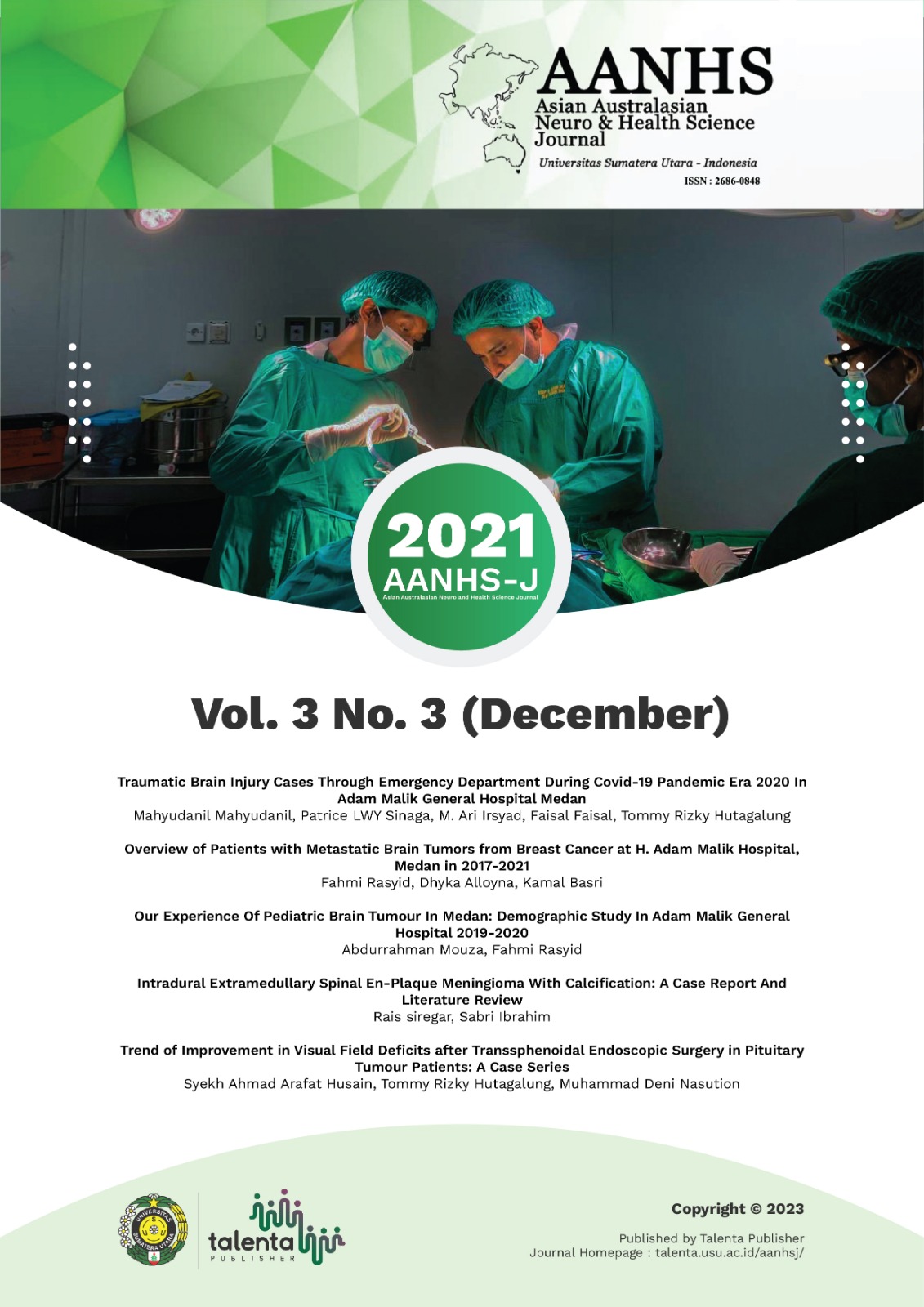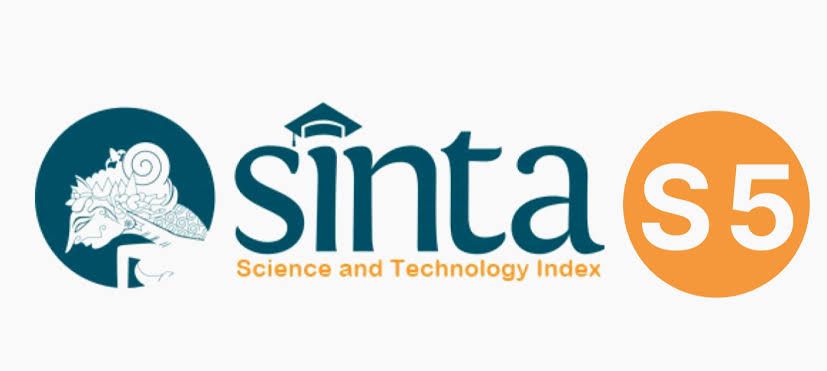Trend of Improvement in Visual Field Deficits after Transsphenoidal Endoscopic Surgery in Pituitary Tumour Patients: A Case Series
DOI:
https://doi.org/10.32734/aanhsj.v3i3.7608Keywords:
pituitary tumor, transsphenoid, neurosurgeryAbstract
Abstract
Introduction: Pituitary tumours account for approximately 15% of all brain tumours, and the growing tumours press against the optic chiasm, resulting in impairment of visual function manifested as visual field defects, decreased visual acuity, and decreased color vision . Compression of the optic chiasm by pituitary tumours generally results in selective loss of the temporal VFs, or bitemporal hemianopia, implying that the nasal retinal fibers are preferentially damaged. The reason for this preferential damage is not fully understood. Transsphenoidal surgery has been reported to safely reduce the pressure on the anterior visual pathway in most patients. Improvement in visual function may occur after transsphenoidal decompression of the chiasm. Because improvement in visual function may occur from a variety of proposed biologic processes.
Case Series : The number of patients according to gender was 71% male (10 people) while 29% female (4 people). The age distribution was found mostly at the age of 40-50 years 36% (5 people). The most common clinical symptoms were field disturbances 85% (12 people). Patients complained of visual field disturbances for 1-2 years as many as 58% (7 people). Vision before surgery is /6 as much as 45% (4 people). Improvements in vision were found for 1 month postoperatively as much as 22% (2 people).
Discussion : Compression of the optic chiasm by pituitary tumours generally results in selective loss of the temporal VFs, or bitemporal hemianopia, implying that the nasal retinal fibers are preferentially damaged. The minimally invasive transsphenoidal approach can be used effectively for 95% of pituitary tumours. Exceptions are those large tumours with significant temporal or anterior cranial fossa extension. In such circumstances, transcranial approaches are often more appropriate. Occasionally, combined transsphenoidal and transcranial approaches are used. Nevertheless, some surgeons extend the basic transsphenoidal exposure in order to remove some of these tumours and avoid a craniotomy . Potential mechanisms of axonal injury from a compressive lesion include direct disruption of conduction along the axon, impaired axoplasmic flow, demyelination with impaired signal conduction, and ischemia from compression or stretching of the blood supply of the chiasm by the tumour. An early fast phase of improvement is consistent with restoration of signal conduction along retinal ganglion cell axons after removal of a compressive lesion.In some individuals, we observed the rapid restoration of normal vision, which would be consistent with this hypothesis. In these individuals, a physiologic conduction block is presumably the main mechanism of injury.
Conclusion: The pattern of improvement of visual function after decompression of the anterior visual pathways suggests three phases of improvement. Improvement in visual function may occur after transsphenoidal decompression of the chiasm. Because improvement in visual function may occur from a variety of proposed biologic processes, we sought to better define this potential for improvement.
Downloads
Downloads
Published
How to Cite
Issue
Section
License
Copyright (c) 2021 Asian Australasian Neuro and Health Science Journal (AANHS-J)

This work is licensed under a Creative Commons Attribution-NonCommercial-NoDerivatives 4.0 International License.
The Authors submitting a manuscript do understand that if the manuscript was accepted for publication, the copyright of the article shall be assigned to AANHS Journal.
The copyright encompasses exclusive rights to reproduce and deliver the article in all forms and media. The reproduction of any part of this journal, its storage in databases and its transmission by any form or media will be allowed only with a written permission from Asian Australasian Neuro and Health Science Journal (AANHSJ).
The Copyright Transfer Form can be downloaded here.
The Copyright form should be signed originally and sent to the Editorial Office in the form of original mail or scanned document.














